0 Comments
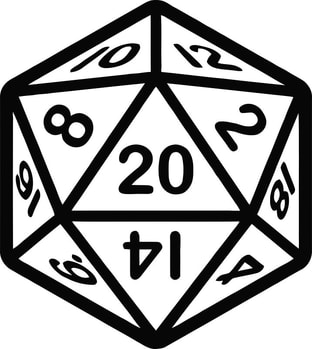 Who am I? Who has the Keys to my beemer? The philosopher Beenie Man first wrestled with these questions on his 1997 dance hall classic "Who Am I" and ever since modern humans have stared into the black spaces between stars, clawing at their skin, mouths agape and drooling while wondering "Who Am I?" Self-awareness is unfortunately a quality which many of us lack. Some of the lesser sages such as Socrates have insisted that the un-examined life is not worth living yet it seems like some of us are full on blundering through existence like a blind person wearing oven mitts. While there are many books written about attempts at self-help and reinventing our lives most people don't make any kind of concerted effort to really develop a sense of self that doesn't include colors or cola preferences. There are a few different ways that people have tried to rate, grade and discover themselves most of these fall short of really uncovering our true selves. The library has recently started to host games of Dungeons & Dragons for middle schoolers and this reminded me of a quote by American moralist Kurt Vonnegut: "We are what we pretend to be, so we must be careful about what we pretend to be" This got me thinking, what exactly are people pretending to be? D&D gives people a chance to pretend in a creative story telling setting. Many modern people mostly pretend that they aren't crying at work or that things are going to 'be ok' while the oceans die and bacteria gets stronger, better, faster. Because we are finite almost chimps with a will to power the reality of somatic life brings us into constant conflict with others as we jostle for position and prestige. As a remedy to this situation there are a couple of common tools of "industrial psychology" as well as folksy astronomy which have been utilized to tell people where they fit into this human zoo that we call civilization. Probably the most common every day way to classify people's talents and personalities is an ancient one, Astrology. Simply read the back pages of the newspaper, just to the left of Zits and south of Garfield is your day spelled out by what I assume is a wizened old crone hunched over a gnarled word processor. Science cant explain how Astrology works, maybe because it does not. Does gravity or dark matter play some part in determining your personality? Maybe something about seasonal bacteria and its epi-genetic effects? Yea sure. I remain skeptical, although a quick thumb through our book What your birthday reveals about you: 366 days of astonishingly accurate revelations about your future, your secrets, and your strengths is weirdly surprising and somewhat accurate. My own personal zodiac does line up with my personality, probably because of the position of some exploding balls of hydrogen that some Greek dudes thought looked like a fish. Very plausible, very real, watch out Mercury is in retrograde until May. The personality assessment that most of us have taken in school or in preparation for employment is the Meyers-Briggs Type Indicator, which separates people into sixteen categories with four different metrics for each personality type. The big two are the person's affinity towards Introversion or Extroversion; whether or not you like to speak in public or rather hide under a desk for a while. Once again my own personal experience is that the MBTI explains your preferences for proximity to other people, but try introducing yourself as an INFP (4% of the population AKA the human unicorn along with Bjork, Kurt Cobain and Van Gogh- who would have started a hell of a band) or an ESTP (10% of the population like Teddy Roosevelt or Madonna, who would have dated for sure. The Bull Moose & Material Girl together forever) and see if anyone even knows what that means. Here in the Roaring Fork I was introduced to Dr. William Moulton Marston's DiSC assessment, which is pretty popular if you work for one of the local Aspen institutions, but has a mysterious and strange history. William Marston is best known for the following things, being the creator of "Wonder Woman," being an practitioner of polyamory and inventing the precursor to the polygraph. I would title a book about Marston's life "1920's Shades of Gray". (The actual book about his life is called "The Secret History of Wonder Woman" and the film "Professor Marston and the Wonder Women is now available in our new DVD section). If you've been DiSC'd you should read this book. The most important thing about the DiSC assessment is that you absolutely must score a D for dominant, meaning that you are a boss, like Rick Ross. Anything you do to achieve this result is justified. Lie, cheat, steal, whatever you gotta do must be done because this is your career in the balance. It’s not like you could just get your wife and your girlfriend to do all your work for you like Professor Marston did. And yes, Marston did take credit for much of the work of his partners Olive Byrne and Elizabeth Marston, but that's a totally acceptable D move. The other thing you should know is that there is a single beer limit (of Colorado Kool Aid no less) at the DiSC after party dinner at a billionaire's house near the river. After your banquet beer you will get a healthy lecture about active listening from someone that makes more money in a week than you will in your entire life. I think i could do much with a few billion. Honestly you should give me a couple of millions of dollars so that I can buy centrifuges for the library and enrich enough uranium to develop nuclear weapons. Then we could declare the Basalt Regional Library a Sovereign Nation and get rid of all late fees. And after this the Library will invade and colonize the Woody Creek Tavern. Maybe launch a sneak attack on Crested Butte too. Or pay a bunch of strangers medical bills. Whatever might make the world a better place. D&D lets you not only choose what kind of creepy medieval fantasy character you want to be, it asks you how that Orc Shaman gets things done. The how is what's more important. D&D has 9 categories to choose from arranged from good to evil and lawful or chaotic. For character reference the scale goes like this at its extremes Lawful Good v. Chaotic evil or Luke Skywalker v. The Joker. This Harry Potter Chart is probably more what you are into, but the character grades remain the same. All characters fit into that scale somewhere. The character you choose to play as for the next two hours says everything about how you would like your own personal human experience to play out. Unlike the MBTI or DiSC systems which ask you to reveal some hidden aspect of yourself, like spraying Windex on the dark glass of your soul, D&D lets you choose what your ideal self could be. When facing the challenges of living, the Trolls of daily life, Mindflayers and Demogorgons of love or finance we ultimately get to choose how to attack these problems. Will you return the gold ring you found in the street, sell it and donate the money to the poor, or hold it for ransom? Would I use the threat of Thermonuclear war to get one of our patrons to return our copy of A Cure For Wellness? According to my D&D alignment, probably not. I might wave your fines if you get me a new copy from the Walmarts. That's just the kind of Chaotic Good person I choose to be. Take the D&D alignment test here and post your results in the comments! Matt CleerI was born a fool, don't want to stay that way.
Do you enjoy films by Pixar, Disney and Dreamworks? Would you like to turn your children into gibbering madmen, tearing their hair out in search of antediluvian glyphs in the cyclopean ruins of long lost R'lyth? If so may I recommend "Howard Lovecraft and The Frozen Kingdom" a 2016 animated feature film that may have been made by a lunatic. A few of Lovecraft's creepy creatures are here in cute animated form making "Howard Lovecraft and the Frozen Kingdom" maybe an attempt to cash in on Disney's Frozen. This is a winter adventure with a big eyed Cthulhu and his star spawn playing with the young Howard P. Lovecraft himself deep in an animated uncanny valley. If you aren't acquainted with the work of H.P. Lovecraft here is a little bit of background. Lovecraft is probably one of the most influential writers of horror and weird fiction that the 20th century produced. Stephen King, Guillermo Del Toro, Laird Barron, Clive Barker and John Carpenter all owe a debt to this strange man from Providence, Rhode Island. Lovecraft's fiction sits between the Gothic, supernatural horror of Edgar Allen Poe or Robert W. Chambers and later science fiction and horror that many of us would find familiar. This a move from ghosts to gross slimy squid monsters from beyond Pluto. Ghostbusters has a Lovecraftian enemy which can be summoned by a cult through a building, a portal not much different than his Yog-Sothoth which threatens to destroy the world. John Carpenter's Thing is an enemy of cosmic horror that humans can barely understand. Guerllmo Del Toro's Kaiju from Pacific Rim are the exact kind of space freaks that Lovecraft dreamed would hopefully someday consume our planet. Lovecraft's contribution to literature is the idea of Cosmic Horror, that the universe is far too weird, strange, unknowable and horrific for humans to really wrap their heads around. While humans may currently be masters of the earth, not very long ago strange incomprehensible beings roamed places strange and deep and humans are at best a future hors d'oeuvre for Cthulhu, the Blind Azathoth, Nyarlathotep and army of Shoggoths. The names for these creatures may have been created when Lovecraft spilled a set of Scrabble tiles. What defines Lovecraft's creatures are as follows- they have bad attitudes and you could never understand them ever even if you wanted to, much like rapper Cardi B. They are immortal, or unable to die and come from stars long dead and black. Nothing is cuddly, nothing is cute. None of his characters are sympathetic, they mostly are going mad, about to go mad, or are already mad. Another characteristic of Lovecraft's prose is that he often writes in a strange present tense where his narrators are in the middle of putting words down to paper when they are ACK! attacked by a ghoul or gibbering chthonic glop or transmogrify into a fish person in the very middle of a sentence. Lovecraft himself was a pretty odd person. Besides dreaming of deities which ooze cosmic ichor he was also afraid of pretty much everything else in the world. Lovecraft was a racist. Flat out terrified of people that didn’t look and sound exactly like himself. This horror is best expressed in his short story "the Horror from Red Hook" where the narrator blunders around a typical Brooklyn neighborhood imagining that everyone around him is aninhuman monster. Today that same neighborhood has an artisanal mayonnaise store. Lovecraft was terrified of women and intimacy. His stories hardly ever mention women at all, none of his protagonists are women and his own personal life was almost completely devoid of female companionship, save his mother and a short marriage. Lovecraft was also a logophile , using arcane and obtuse verbiage pulled from what seems like Middle English Howard Lovecraft and the Frozen Kingdom takes a peek into the childhood of Lovecraft, his strange parents and his very close and personal friendship with that which not dead eternal lie, the great Cthulhu himself. None of Lovecraft's major works are tackled, and certainly aren't explained to children in any coherent manner. The animated feature is too sparse, without much music, and looks like a PBS kids feature like Dino Train but creepy and terrible. There are no bright colors or even moments of wonder like in Inside Out or Up, just drab quiet dialogue with Ron Perlman. Howard Lovecraft and the Frozen Kingdom is a strange entry into the world of children's animated feature films, but won’t really give your children a good introduction to the genre of cosmic horror. Why not start with a real Lovecraft classic like Stewart Gordon's Re-animator or From Beyond, films that don’t hesitate to really mess your children up with stretching alien glop monsters and headless zombie professors. How else could you introduce a school age child to the idea that the universe is a swirling maelstrom of chaos, where humans can never truly grasp their own insignificance in the face of ancient alien horror that is out to consume us all? I guess you could let them watch the news. -Matt Cleer
 Does your business or organization employ High School Students during the summer? Basalt Regional Library will be hosting a Summer Job Fair to connect local businesses with local Roaring Fork Valley High Schools students, and is currently taking registrations from local businesses interested in participating. BENEFITS TO YOU:
EVENT DETAILS Event: High School Summer Job Fair Date: Saturday, April 28 Time: 11 a.m. -1 p.m. HOW TO REGISTER Businesses interested in participating should register by March 21 Email: erin.hollingsworth@basaltlibrary.org Online: registration form
Unlike other dystopian novelists, Zumas plots no dramatic martial law. Her characters simply wake to a president they didn’t vote for and then later to the legislation that decides how their bodies are used. In an Oregon fishing town, four characters swallow what it now means to be a woman. One wishes she could escape her children, one surrenders a child for adoption, one seeks abortion and one desperately wants to be a mother. The story centers on Ro, “The Biographer,” a depressed, single, high school history teacher, whose father lives in a Florida retirement home, whose brother died of a heroin overdose, and whose last chance to have a child is through artificial insemination. Ro visits a fertility specialist’s office, described as “a room for women whose bodies are broken,” where she tries to rationalize her urgent impulse to motherhood. Susan, “The Wife,” lives in the house she grew up in with an aloof husband who teaches at the same school as “The Biographer.” Susan begs him to attend couples therapy while trying not to resent their two toddlers who annoy and fatigue her stay-at-home life. Susan envies Ro’s childlessness but offers only condescension, both women burdened by societal expectations. Adopted Mattie, “The Daughter,” loses her virginity to her careless boyfriend. The promising but pregnant 15-year-old in the Biographer’s class, she pursues abortion in a world that now views her as criminal. Gin, “The Mender,” a defiant healer, shares forest herbs to help end pregnancies for women without money or insurance. Arrested in a modern-day witch hunt, her narrative unites the other women, who work to get Gin acquitted. And Eivør, a 19th-century, Faroese polar explorer and the compelling subject of Ro’s biography, disrupts each chapter with fragments of her brutal determined life, serving as a compass for women who persist. Zumas fluently speaks their truths, from the Daughter’s fear and earnestness, to the Mother’s conflicted emotions and the Mender’s earthy intuition. Her prose will suddenly quicken in a flood of anxiety, sarcasm and rationality. “She doesn't want to skip the Math Academy. (She kicks Nouri’s gothsickle ass at calculus.) Or to push it out. She doesn't want to wonder; and she would. The kid too—Why wasn’t I kept? Was his mother too young? Too old? Too hot? Too cold? She doesn’t want him wondering, or herself wondering. Are you mine? And she doesn’t want to worry she’ll be found. Selfish. But she has a self. Why not use it?” Thrilled by her mercurial style, I bookmarked a dozen pages in Zumas’ "Red Clocks," a story that cleverly reveals the underpinnings of a current socio-political wrangle yet maintains hope for personal transformation. Leni Zumas is one to watch. -Ann Scott This review originally appeared in the Aspen Daily News on March 1, 2018 |
Adult News & reviewsLibrary news, info about upcoming events, reviews of books and films, and a look at the topics that affect us as a library. Archives
July 2023
|
General |
Borrowing |
About |

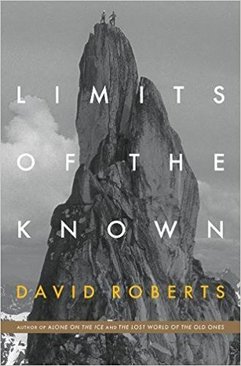
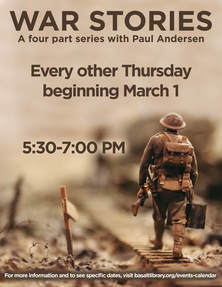

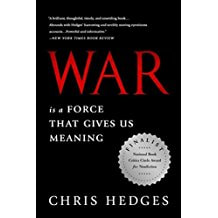
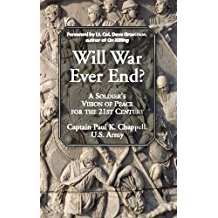
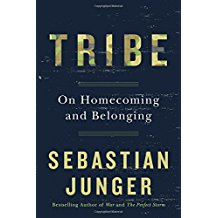
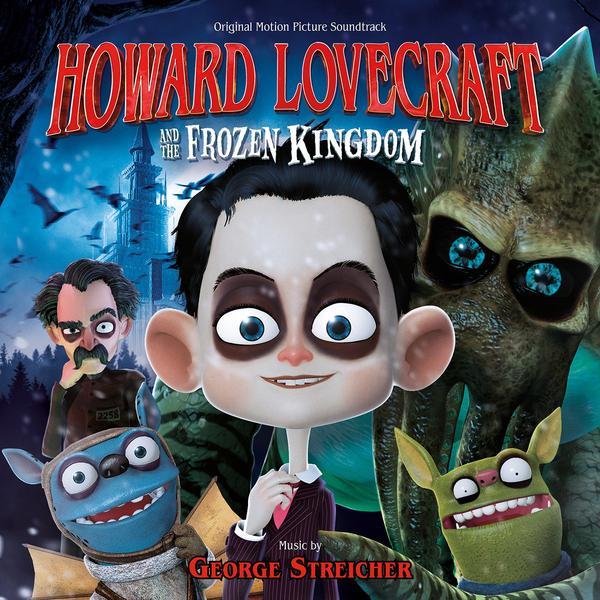
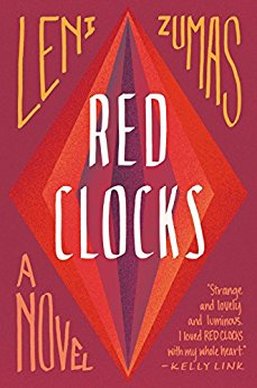
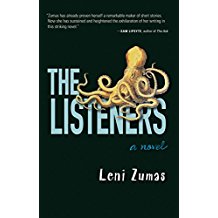
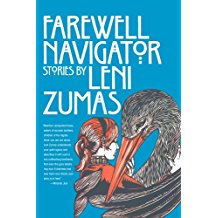
 RSS Feed
RSS Feed
